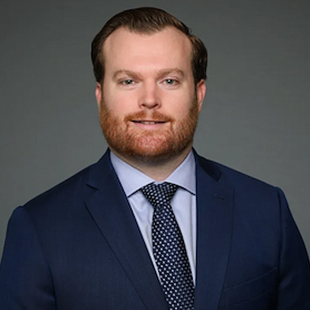Our knees are perhaps the most injured joints for professional athletes, weekend warriors, and less active individuals alike. Because our knees bear almost all of our body weight, they are especially susceptible to gradual wear and tear damage, as well as to injury from trauma, even from something as simple as a trip and fall. The specialists at Union County Orthopaedic Group understand how debilitating knee injuries can be.
The top-rated orthopedic knee surgeons at Union County Orthopaedic Group help patients get the best possible results from conservative treatments before recommending knee surgery. Our experts orthopedic surgeons guide their patients through each stage of treatment, ensuring they have the smoothest possible journey toward a pain-free lifestyle.
You can be sure that the Union County Orthopaedic Group staff is dedicated not only to helping you overcome your knee injury, but also to helping you get back to the sports and activities you enjoy.
Conditions and Injuries of the Knee:
- ACL Injuries
- MCL Injuries
- Chondromalacia Patella
- Collateral Ligament Injuries
- Cruciate Ligament Injuries
- Knee Arthritis/Osteoarthritis
- Knee Bursitis
- Knee Contusions
- Meniscus Tear
- Iliotibial Band Syndrome
- Patellar Dislocation
- Patellar Tendon Tear
- Patellar Tendonitis
- Posterior Cruciate Ligament Injuries
- Quadriceps Tendon Tear
Treatments for Knee Conditions & Injuries:
- Arthroscopic Knee Surgery
- ACL Reconstruction
- Lateral Release
- Meniscus Repair/Meniscectomy
- Patellar/Quadriceps Tendon Repair
- Partial Knee Replacement
- Plica Removal
- Revision Knee Repair
- Total Knee Replacement
- Unicondylar Knee Replacement
- Viscosupplementation Gel Injections for Knee Osteoarthritis
- Steroidal Injections for Knee Pain
Anatomy of the Knee
Our knee joints are the largest joints in the body. They have to be especially stable in order to support the weight of our bodies during activities we perform constantly, such as walking, climbing stairs, or squatting down. Despite its functional design, the constant use takes a toll on our knees, making them especially susceptible to gradual injuries, like osteoarthritis, as well as sports and trauma-induced injuries which can occur even after minor accidents or falls.
Joints
The knee joint is the meeting place of three main bones; the thigh bone (femur), the shin bone (tibia), and the kneecap (patella). The fibula, which is the smaller bone that runs behind the tibia, makes a small joint with the side of the tibia but is not part of the main knee joint. The small joint does not move much; it is held together with tough tendons and offers support to the leg as a whole.
Our main knee joints are simple but sturdy hinge joints. Our femur ends in round nodules called femoral condyles. These adjacent round heads sit on the flat surface of our tibia’s head, called the tibial plateau. The half of the plateau that supports the outside nodule of the femur is called the lateral tibial plateau. The portion supporting the nodule on the inner side of the knee is referred to as the medial tibial plateau. The groove in between the two femoral condyles is called the patellofemoral groove because the patella glides through this partition. The bony portion of the patella lies directly in front of our knee joint as the kneecap, which you can easily feel when you bend your knee.
Cartilage
Articular cartilage is particularly important in a weight-bearing joint like our knee. The articular cartilage that coats the ends of our femurs, tibias and patellas is about a quarter inch thick. The white, rubbery, slippery surface serves to absorb shock within the joint and facilitate easy movement as the bones glide against each other. This smooth surface can be worn down over time causing a common condition known as osteoarthritis. Without frictionless movement in the knee joint, pain, swelling, deformity, laxity (instability), cracking, and inflammation can ensue.
The meniscus is a structure made up of two pieces of tough cartilage within the knee joint. The menisci are two C-shaped pieces of tough, rubbery cartilage located between the femoral condyles and the tibial plateau. They rim the outer edges of the hinge joint, ending at the patellar groove. The meniscus’ main job is to absorb shock, keeping the impact caused by anything from walking to jumping, from jarring the bones of your femur and tibia. Both the medial and lateral menisci act as very important cushions within the joint, while also evenly distributing your body weight through the joint. This prevents the bones from grinding against each other unevenly. Meniscus tears are extremely common and can be caused by something as simple as twisting your knee. Unfortunately, meniscal cartilage does not heal on its own, but can often be treated without surgery, so it is critical to get all the information to make the best decision possible.
Ligaments
Our knees are synovial joints, meaning the surrounding ligaments form a capsule around the joint that is lined on the inside by synovium. Synovium produces synovial fluid, which aids in lubricating the joint.
A ligament is any tissue that attached bone to bone. There are four main ligaments, or tough bands of soft tissue, that hold our joints together and provide support and stability as we move our knees. Ligaments connect bone to bone, making them the main structural support for the joint. This also leaves them especially vulnerable to injury and extremely important to rehabilitate for the proper functioning of our knees.
The anterior cruciate ligament (ACL) and posterior cruciate ligament (PCL) exist inside the knee joint between the femur and tibia, controlling the front-to-back bending of the knee joint. The ACL attaches the inner side of the lateral femoral condyle to the front of the tibial plateau. It is crucial in preventing the knee from bending too far forward, which causes the femur to stretch past the tibia. It is very commonly torn during twists, simple stumbles, and especially during sports-related injuries. The PCL is less commonly injured, though it can be torn as a result of direct trauma to the knee. This short ligament attaches the medial femoral condyle to the posterior portion of the tibial plateau. This prevents the tibia from sliding out of alignment with the femur from the back.
The transverse ligament is a minor ligament which stretches from the front of the medial meniscus to the front of the lateral meniscus. While this is the main ligament that keeps the meniscus stable, others exist to keep the cartilage firmly in place.
Two different ligaments support the knee joint from the sides, preventing the bones from sliding out of place to the left or right. The lateral collateral ligament (LCL) attaches to the outer side of the femur (furthest from your body) to the outer side of the tibia. The medial collateral ligament (MCL) attaches the same to bones only at the inner side of your knee (the side closest to your opposite knee). The MCL is also a commonly torn ligament in sports injuries.
Bursa
The knee joint has a number of bursae that prevent friction between bone and tissue as we move our legs. Bursae are slippery, fluid-filled sacs that tissue and bone can easily glide over.
A bursa exists in between the quadriceps tendon (which helps us straighten the leg) and the femur. Another lies between the patellar tendon and the tibia. Perhaps the most important bursa is the prepatellar bursa, which sits between the kneecap and the skin. This is the most common site of knee bursitis, or inflammation of the bursa due to constant rubbing of the patella against its surface. You can feel this bursa slightly under your kneecap.
Tendons & Muscles
A Tendon is a tough band of tissue that connect our muscles to our bones so that we can move our limbs when contracting or releasing certain muscles. The patellar tendon helps to anchor the end of the patella to the front of the tibia at the tibial tubercle. Although it runs from bone to bone, it is really a continuation of the quadriceps tendon that also attaches to the top of the patella. These two tendons are critical in transmitting the incredible forces you’re your quadriceps muscle to the tibia bone, allowing your knee to go straight. This structure keeps the kneecap in place while allowing it to move as needed when we bend our knee. Both the quadriceps and patellar tendons are common sites for sports injuries and gradual conditions like tendonitis. Various tough tendons attach the quadriceps to the front of the femur while others connect the hamstring muscles to the back of the femur and knee. When the hamstring muscles contract, our knee bends.
Nerves and Blood Vessels
The sciatic nerve that runs from our lower back, down our buttocks, and into our thighs, splits into two different nerves before crossing the knee joint. The tibial nerve nerve crosses the back of our knees and the common peroneal runs on the outside of the knee, directly under the fibular head. Both of these nerves run all the way down to our feet, providing sensation and muscle control to the whole leg. These nerves can be compromised by the many conditions of the knee that cause inflammation. The popliteal artery is the largest blood supply to the leg. If this artery is damaged, the whole leg can be compromised. The popliteal vein carries oxygen-depleted blood back to the heart from the foot.





